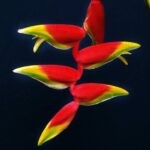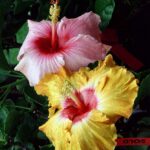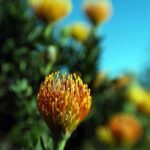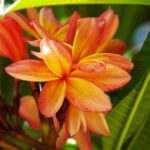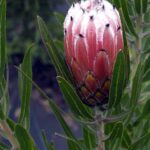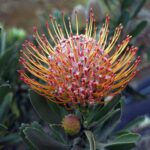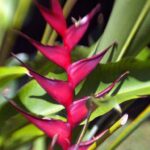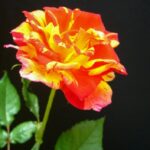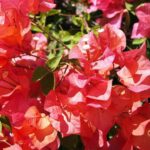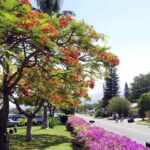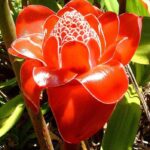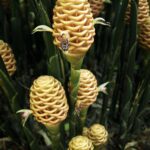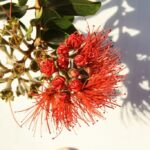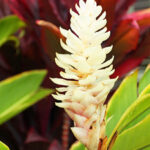Flowers in Hawai’i – Maui’s Amazing Diversity
Popular Flowers On Maui
(And Flowering Trees)
Of all the types of flowers that grow in Hawaiʻi the diversity in Maui is sure to impress even the most educated botanist. Many types are recognized with ease. From lilies and variegated roses to the ever popular exotic tropicals, pretty much everything grows easily on Maui. Numerous tropicals from all over the world are here including the more highly specialized flowers such as protea from Africa and Australia.
Because Maui has 17 of the 20 known worldwide climate zones, there is always an area to grow just about any kind of flower that exists.
In addition to this are many flower farms and nurseries which supply resorts, flower shops and stores with fresh flowers daily. On top of that Maui’s finest flora is shipped all over the world. Our Maui tours often include stops at flower farms and other places along the road where you can learn about all the incredibly diverse varieties we have on the island (while learning our Hawaiian flower names too).
Hawaii State Flower Is The Yellow Hibiscus
In 1959, Hawaii became a state, yet it was not until 1988 that the yellow hibiscus became the state flower. Some of the traditional meanings of the hibiscus include delicate beauty, unity and peace, a perfect representation of what Hawaii is today.
Lei Flowers
Flowers are especially enjoyed and revered by the Hawaiian culture. If you’ve visited Hawaii I’m sure you’ve received or maybe have given someone a lei. These flower necklaces are known throughout Polynesia but in Hawai’i they are so loved that we even have a “Lei Day Holiday” !
During Lei day on each island has a special flower and color. On Maui it is the Pink Lokelani Flower, the Maui rose.
| HAWAIIAN ISLAND | ISLAND COLOR | HAWAIIAN FLOWER, NUT OR SHELL LEIS |
| Hawai’i | Red | ‘ʻōhiʻa lehua (Metrosideros polymorpha) |
| Maui | Pink | lokelani (Rosa damascena) |
| Kahoʻolawe | Gray or Silver | hinahina (Heliotropium anomalum var. argentum) |
| Lānaʻi | Orange | kaunaʻoa (Cuscuta sandwichiana) |
| Oʻahu | Yellow or Gold | ʻilima (Sida fallax) |
| Molokaʻi | Green | kukui (Aleurites moluccanus) |
| Kauaʻi | Purple | mokihana (Melicope anisata) |
| Niʻihau | White | pūpū o Niʻihau (Niʻihau shells) |
Hawaiian Wedding Flowers
Come get “Maui’d” and have a beautiful Hawaiian wedding surrounded by orchids, ti leaves, plumerias, dendrobium orchid, anthurium boutonniere, white ginger, pikake, tuberose, cymbidium orchid and many others. The floral gardens are going all year around here on Maui and if one garden doesn’t have what you love, another will.
As always, when looking for ideas to make your special event more flowery and create beautiful bouquets, hairpieces, lei or centerpieces one of the best places to turn to is pinterest.com and search.
Native Hawaiian Flowers
To see a truly exhaustive list of the types of native Hawaiian flowers & ferns check out the botany department at University of Hawaii which also names all the Hawaiian names like; koki’o ke’oke’o (hibiscus), hau hele (hibiscus), koli’o (hibiscus koki’o), o’oloa ‘ula (abutilon menziesii), alena (boerhavia repens), ‘awikiwiki (canavalia pubescens), koali ‘awa (ipomoea), pukiawe (leptecophylla), nanu (gardenia), ‘akala (rubus hawaiensis), ‘le’ie (freycinetia arborea) and hala (pandanus tectorius) to name just a few.
Check Out These Popular Flowers In Hawaii
Plumeria
Few flowers hold the allure of Hawai’i more than the plumeria. The huge varieties found throughout the islands make it seem as though they originated here, but in truth they are an introduced species. First discovered in the southern forest regions of Mexico in the mid 1800’s, the plant is also known to indigenous to Central America, India, the Caribbean and Brazil.
The first plants were brought to Hawai’i in 1860 by Wilhelm Hillebrand, a German physician and botanist. In Hawai’i the plant usually grows as a small tree that mostly blooms from April to November. Flowers do not last long but the bloom pod can produce flowers throughout the year depending on climate and location. The flower colors are diverse in Maui and include white, orange, yellow, pink, salmon, and purple with hybrids containing combinations of all these colors. Plumeria have an amazing fragrance that is most intense at night as they lure moths needed to pollinate them. Interestingly enough they produce no nectar, effectively duping the pollinators to move from flower to flower in a fruitless search for nectar.
The flowers are well known for their use in making flower lei. These beautiful and fragrant flowers can also be worn in the hair by women to indicate their relationship status – over the right ear if single and over the left ear if taken.
Plumeria Use Across Polynesia
Plumeria are used in lei making across much of the south Pacific including Tahiti, Fiji, Samoa, New Zealand, Tonga and the Cook Islands.
Plumeria Varieties
According to the American Plumeria society of Florida there are more than 300 named varieties of Plumeria across the world.
Plumeria in India
In India, the tropical plants were known as temple trees. Buddhists said they resembled immortality because you can snap a branch off and it will re-grow and produce beautiful flowers from the severed branch. Hindus offered the beautiful tropical flowers to their gods. In other cultures, like Bengali, the white Plumerias were associated with funerals or death.
Plumeria in Mexico
Aztec Indians used Plumeria for medical purposes.
Plumeria in the Caribbean
Caribbean’s use the leaves as a wrap to heal bruises.
Plumeria in the Philippines
In the Philippines or Indonesia, you may find these flowers in graveyards because of the belief that the tropical plant would shelter ghosts.
Bird of Paradise
You’ll see these everywhere on Maui. They are typically found in bouquets and floral arrangements seen placed in the entrances, sitting areas and deluxe rooms of larger resorts and hotels. It is also commonly found in local Hawaiian landscaping located at warm, dry sea level areas like Kihei and Lahaina. It’s long stems suspend the blossoms 3 to 4 feet into the air. They have no smell and last for as much as a week or more after being cut.
Ginger
This plant has a huge number of variations and is probably the most useful of all flower species on Maui. It is used as a main ingredient in many Hawaiian dishes and grows very prolifically in all areas. The blossoms have no smell until they are squeezed in the palm of your hand, which releases a very fragrant, candy-like smell. A variety grown primarily in Hana called ‘Awapuhi Ginger is a main ingredient in many shampoos. It grows so well here that some landscapers in Hawaiʻi dislike them because once established they are very difficult to get rid of.
Heliconia
These are some of the most stunning tropicals grown in Maui. They are one of my favorites. Because they come in so many shapes, sizes and colors it’s sometimes hard to believe they are the same species. They like to bloom in the shadow of their own leaves which can make them a challenge to spot in dense foliage but they can be seen growing wild in the rainforests of Hana.
Hibiscus
Not many species of flowers are more associated with Hawaiʻi than Hibiscus. It is because most tropical flower species grown in Hawaiʻi are not native whereas there are 7 Hibiscus regarded as Hawaiian natives, comprised of 5 endemic and 2 indigenous. The Yellow Hawaiian Hibiscus is the state flower. These large blooms, (often 4 to 6 inches in diameter), are the only yellow native but are not commonly seen.
More often than not the Hibiscus planted around Maui are the hybrid species. They grow as large bushes with older plants reaching 15 feet tall. You’ll not only see them in resort landscaping but also in many yards. They bloom year around and shed leaves slowly which is one reason why landscapers love them. They have no smell but the hybrid type have endless color variations with many of them being one-of-a- kinds.
Protea
These hearty plants originate in South Africa and are one of the oldest flowers in the world dating back 100 million years. The climate and soil conditions at around the 2000 to 3000 ft elevation of Kula, (also known as “Upcountry Maui”) on the western slopes of Haleakala are ideal for these plants. They were first propagated here in the mid 1970’s. Since then they have become a major industry on the island as the large blooms are shipped worldwide. The types of blooms are so diverse it’s hard to believe they are the same species. Donning names like King, Dutchess, Mink, Pincushion and Banksia, they are made into stunning bouquets. These flowers are very long lasting with strong, wood like stems. Here is some interesting flora trivia: Macadamia nuts are also a type of protea!
Flowering Trees
In addition to all of these amazing flowering plants growing throughout Maui we also have a large variety of tropical flowering trees. Plumeria, African Tulip, Royal Poinciana, Jacaranda and the native Ohia (help stop spread of rapid ohia death) are just a few of the flowering trees you can find growing on Maui. They add an amazing amount of color to an already lush array of ground level flowers and vibrant, colorful shrubs like Bougainvillea.
Many of these species do best in hot, dry climates of Kihei and Lahaina areas. However, a great place to see a large variety of flowers, shrubs and flowering trees all in one place is Hana.
There are so many kinds of flowers in Maui that you can spend days just looking around to find all these different kinds. One spot to check out that has nice collection of flowers in one place is Maui Tropical Plantation. There are several here that I haven’t mentioned like Orchids and Bromeliads. It’s a great location because they can answer your questions about the plants and flowers in Hawaiʻi. Hope this information helps and don’t forget to take notes as you take pictures. It comes in handy when people say “Hey that’s a beautiful flower photo! What is it”?
Enjoy More Flowers of Hawaii Photos Below – Aloha Nui Loa






